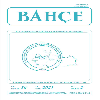NOHUT GEVENİNDE (Astragalus cicer) SERT TOHUMLUĞUN AZALTILMASI İÇİN ÇEŞİTLİ TOHUM KABUĞU İNCELTME METOTLARI
VARIOUS SCARIFICATION METHODS FOR REDUCING OF HARD SEED IN CICER MILKVETCH (Astragalus cicer)
___
- 1. Acharya, S.N., Kastelic, J.P., Beauchemin, K.A., Messenger, D.F., 2006. A review of research progress on cicer milkvetch (Astragalus cicer L.). Can. J. Plant Sci. 86:49-62.
- 2. Albrecht, M.A., Penzagos, J.C.Z., 2012. Seed germination ecology of three imperiled plants of rock outcrops in the southeastern United States. Journal of the Torrey Botanical Society 139(1):86-95. (doi:10.3159/torrey-d-11-0006 6.1).
- 3. Austin, R.D., 1969. Evaluations on germination procedure, mechanical scarification and environmental variation on germination of cicer milkvetch (Astragalus cicer L.) seed.
- 4. Baldridge, D.E., R.G. Lohmiller, eds. 1990. Montana interagency plant materials handbook. Montana State University, Bozeman, MT. 337p.
- 5. Busse, W.F., 1930. Effect of low temperatures on germination of impermeable seeds. Bot. Gazette, 89:169-179.
- 6. Can, E., Çeliktaş, N., Hatipoğlu, R., Avcı, S., 2009. Breaking seed dormancy of some annual medicago and trifolium species by different treatments. Turk. J. Crops 14(2):72-78.
- 7. Chou, Y.F., Cox, R.D., Wester, D.B., 2012. Smoke water and heat shock influence germination of shortgrass prairie species. Rangeland Ecology & Management 65(3): 260-267 (doi:10.2111/rem-d-11-00093.1).
- 8. Dittus, D.A., Muir, J.P., 2010. Breaking germination dormancy of Texas native perennial herbaceous legumes. Native Plants 11:5-10.
- 9. Dixon, H.H., 1901. Vitality of seeds. Nature 64:256-257.
- 10. Graham, P.H., Vance, C.P., 2003. Legumes: Importance and constraints to greather utilization. Plant Physiol. 131:872-877. 11. Harrington, G.T., 1916. Agricultural value of impermeable seeds. J. Agric. Res., 6: 761-796.
- 12. Isivand, H.R., Arefi, H.M., Afshari, R.T., 2006. The investigation of seed germination and breaking dormancy in Astragalus siliquosus. Iranian Jour. Rangelands and Forests Plant Breeding and Genetic Research 13:84-67. (In Persian).
- 13. Islam, M.A., Kimura, E., 2010. Enhancing establishment of forage legumes through seed scarification and use of cover crop. Reflections, pp:38-4.
- 14. Kaplan, L., Lynch, T.F., 1999. Phaseolus (fabaceae) in archaeology: AMS radiocarbon dates and their significance for pre-Colombian agriculture. Econ. Bot. 53:261-272.
- 15. Kimura, E., Islam, M.A., 2012. Seed scarification methods and their use in forage legumes. Res. J. Seed Sci. 5(2):38-50.
- 16. Long, Y., Tan D.Y., Baskin C.C., Baskin J.M., 2012. Seed dormancy and germination characteristics of Astragalus arpilobus (Fabaceae, subfamily Papilionoideae), a central Asian desert annual ephemeral. S. Afr. J. Bot. 83:68-77.
- 17. Miklas, P.N., Townsend, C.E., Ladd, S.I., 1987. Seed coat anatomy and the scarification of cicer milkvetch. Crop Science 27(4):766-772 (doi:10.2135/cropsci1987.0011183x0027 00040032x).
- 18. Miller, D.A., Hoveland, C.S., 1995. Other temperate legumes. Forages, The Science of Grassland Agriculture, Edi: Barnes R.F., Miller, D.A. and Nelson C.J., 1:273-281.
- 19. Rincker, C.M., 1954. Effect of heat on impermeable seeds of alfalfa, sweet clover and red clover. Agron. J. 46:247-250.
- 20. Rutar, R., Stjepanovic, M., Popovic, S., Bukvic, Z., Pacek, D., 2001. Effect of temperature on germination and hard alfalfa seed. CIHEAM 2:137-139.
- 21. Smoliak, S., Hanna, M.R., 1977. Seedling competition some forage legumes mono and mixed culture under greenhouse conditions. Can. J. Plant Sci. 57:897-903.
- 22. Statwick, J.M., 2016. Germination pretreatments to break hard-seed dormancy in Astragalus cicer L. (Fabaceae). Peer J. 4: e2621; (doi: 10.7717/peerj.2621).
- 23. Townsend, C.E., McGinnies, W.J., 1972. Temperature requirements for seed germination of several forage legumes. Agronomy Journal 64(6):809-812.
- 24. Zarekia, A., Jafari, A., Zandi Esfahan, E., Fallah Hosseini, L., 2013. Study on germination of some perennial herbaceous Astragalus. Iranian Jour. Range and Desert Research. 20(1):88-100. (In Persian).
- 25. Zarekia, S., Jafari, A.A., Esfahan, E.Z., 2014. Effects of seed scarification on vegetation parameters in some Astragalus species under field conditions (Case Study: Homand Absard, Damavand, Iran). Journal of Rangeland Science 4(2):151-158.
- ISSN: 1300-8943
- Yayın Aralığı: 2
- Başlangıç: 1968
- Yayıncı: Atatürk Bahçe Kültürleri Merkez Araştırma Enstitüsü
ZEYTİNYAĞI ÜRETİM ATIKLARI VE DEĞERLENDİRİLME YÖNTEMLERİ
Aişe DELİBORAN, Şule SAVRAN, Ünal KAYA
KAOLİN UYGULAMASININ BAZI CEVİZ ÇEŞİTLERİNDE ANTRAKNOZ VE İÇ KURDU OLUŞUMUNA ETKİSİ
Oğuzhan ÇALIŞKAN, Safder BAYAZIT, Hilal TEFEK
BAZI YENİ SOFRALIK ÜZÜM ÇEŞİTLERİNİN (Vitis vinifera) GÖZ VERİMLİLİKLERİNİN BELİRLENMESİ
ISPANAK ISLAHI VE ISPANAK ISLAHINDA YENİ YAKLAŞIMLAR
Ömer BEYHAN, Taki DEMİR, Zühal GÜNEŞLİ
BAZI CEVİZ ÇEŞİDİ TOHUMLARINDA, ÇİMLENME POTANSİYELİNİN BELİRLENMESİ
Yılmaz SESLİ, Faik Ekmel TEKİNTAŞ
TÜRKİYE’DE YEM BİTKİSİ OLARAK KULLANILAN BAZI Fabaceae TÜRLERİNİN MOLEKÜLER FİLOGENETİK ANALİZLERİ
ORGANİK OLARAK YETİŞTİRİLEN KÜTAHYA VE MONTMORENCY VİŞNE ÇEŞİTLERİNİN MEYVE KALİTE ÖZELLİKLERİ
